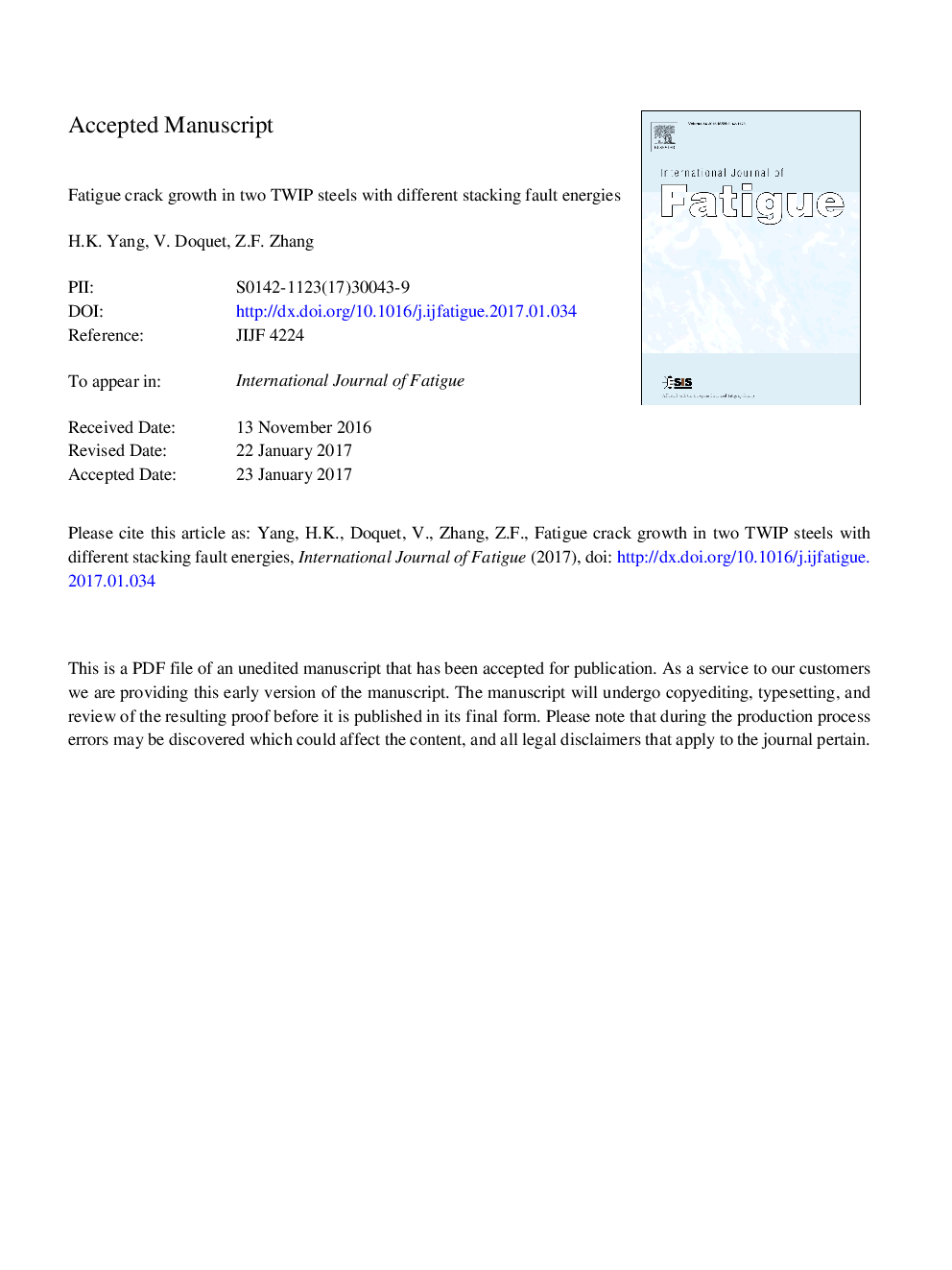| Article ID | Journal | Published Year | Pages | File Type |
|---|---|---|---|---|
| 5015237 | International Journal of Fatigue | 2017 | 37 Pages |
Abstract
Fatigue crack growth tests with RÂ =Â 0 and 0.4 were carried out on Fe-22Mn-0.6C and Fe-22Mn-0.6C-3Al (wt.%) Twinning-Induced Plasticity (TWIP) steels with stacking fault energies around 21.5 and 37Â mJ/m2, respectively. The former exhibits more crack closure effects, partly due to stronger asperity-induced closure. Strain-controlled push-pull tests followed by scanning electron microscope observations show that both steels are prone to mechanical twinning under low-cycle fatigue, associated with an increasing kinematic hardening. Twinning is however more profuse in Fe-22Mn-0.6C steel. Elastic-plastic finite elements simulations of crack growth, using specific constitutive equations able to capture the increasing kinematic hardening suggest that plasticity-induced crack closure is lower in Fe-22Mn-0.6C steel. Even after closure corrections, the Al-free steel, exhibits a lower resistance to fatigue crack growth, which is attributed to a pronounced strain localisation at the crack tip, and maybe also to environment effects.
Related Topics
Physical Sciences and Engineering
Engineering
Mechanical Engineering
Authors
H.K. Yang, V. Doquet, Z.F. Zhang,
